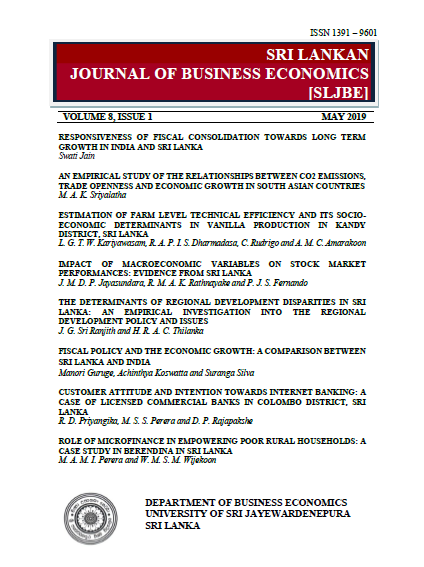AN EMPIRICAL STUDY OF THE RELATIONSHIPS BETWEEN CO2 EMISSIONS, TRADE OPENNESS AND ECONOMIC GROWTH IN SOUTH ASIAN COUNTRIES
Abstract
The economic conditions and policies change over time and the changes may have different impact to their economies. In the era of globalization, demand for energy is increasing rapidly and all countries depend highly on energy. It has become one of the main problems in the world. Thus, there is requirement to identifying the impact of this dependency of energy on an economy. Impact of energy consumption is derived from environmental Kuznets curve (EKC). Based on such background, the objective of this paper is to shed light on and examine the existence of the EKC in selected SAARC countries from 1960-2016.
This study performed multiple OLS regression analysis for the cubic and squared specifications to investigate the relationships between environmental degradation, economic growth, capital stock and trade liberalization.
Depending on the inherited features of each country, the estimated EKC show different temporal patterns. Nepal shows an N-shaped curve while all other countries have an opposite to the N-shaped curve. Similar differences are also observed in the relationship between CO2 emissions and trade openness. In the case of Sri Lanka, Nepal and Pakistan, they reveal a U-shaped curve, while Indian and Bangladesh show an inverted U-shaped curve. At the early stage of development there is insignificant influence on CO2 emissions from economic growth because of low industrialization in these countries. In the case of trade openness in Pakistan, Nepal and Sri Lanka, the coefficients of OPEN show negative relationship with CO2. As stated by Grossman and Krueger, (1995); Halicioglu, (2009), there is a production of pollution intensive goods as they tend to have dirty industries with heavy share of pollutants.
A suitable environmental policy to reduce total CO2 emissions without damaging economic growth is important for these countries since all these countries still belong to the developing nations. To improve energy efficiency, policy makers can formulate strategies to avoid unnecessary use of energy. On the other hand, using less energy intensive technologies, minimizing the loss of power during distribution and transmission processes, and employing different tariff mechanisms to control energy use are some important policies that are possible to increase energy efficiency for these counties.
Keywords: CO2, Environmental Kuznets curve (EKC); Economic growth; Trade openness; Capital stock; SAARC countries.

